Articles and Company News
We aim to keep our clients up-to-date with news and relevant opinions which concern your finances. Our regular email bulletin is designed to inform and share views with our members.
2022
RBA Media Release, April 2022
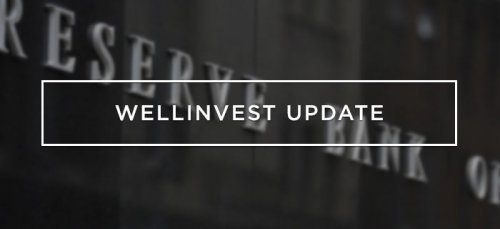
Statement by Philip Lowe, Governor: Monetary Policy Decision
At its meeting today, the Board decided to maintain the cash rate target at 10 basis points and the interest rate on Exchange Settlement balances at zero per cent.
Inflation has increased sharply in many parts of the world. Ongoing supply-side problems, Russia's invasion of Ukraine and strong demand as economies recover from the pandemic are all contributing to the upward pressure on prices. In response, bond yields have risen and expectations of future policy interest rates have increased.
The Australian economy remains resilient and spending is picking up following the Omicron setback. Household and business balance sheets are in generally good shape, an upswing in business investment is underway and there is a large pipeline of construction work to be completed. Macroeconomic policy settings also remain supportive of growth and national income is being boosted by higher commodity prices. At the same time, rising prices are putting pressure on household budgets and the floods are causing hardship for many communities.
The strength of the Australian economy is evident in the labour market, with the unemployment rate falling further to 4 per cent in February. Underemployment is also at its lowest level in many years. Job vacancies and job ads are at high levels and point to continuing strong growth in employment over the months ahead. The RBA's central forecast is for the unemployment rate to fall to below 4 per cent this year and to remain below 4 per cent next year.
Wages growth has picked up, but, at the aggregate level, is only around the relatively low rates prevailing before the pandemic. There are, however, some areas where larger wage increases are occurring. Given the tightness of the labour market, a further pick-up in aggregate wages growth and broader measures of labour costs is in prospect. This pick-up is still expected to be only gradual, although there is uncertainty about the behaviour of labour costs at historically low levels of unemployment.
Inflation has increased in Australia, but it remains lower than in many other countries; in underlying terms, inflation is 2.6 per cent and in headline terms it is 3.5 per cent. Higher prices for petrol and other commodities will result in a further lift in inflation over coming quarters, with an updated set of forecasts to be published in May. The main sources of uncertainty relate to the speed of resolution of the various supply-side issues, developments in global energy markets and the evolution of overall labour costs.
Financial conditions in Australia continue to be highly accommodative. Interest rates remain at a very low level, although fixed mortgage rates for new loans have risen recently. The Australian dollar exchange rate has appreciated due to the higher commodity prices and, in TWI terms, is around the level of a year ago. Housing prices have risen strongly over the past year, although some housing markets have eased recently. With interest rates at historically low levels, it is important that lending standards are maintained and that borrowers have adequate buffers.
The Board's policies during the pandemic have supported progress towards the objectives of full employment and inflation consistent with the target. The Board has wanted to see actual evidence that inflation is sustainably within the 2 to 3 per cent target range before it increases interest rates. Inflation has picked up and a further increase is expected, but growth in labour costs has been below rates that are likely to be consistent with inflation being sustainably at target. Over coming months, important additional evidence will be available to the Board on both inflation and the evolution of labour costs. The Board will assess this and other incoming information as its sets policy to support full employment in Australia and inflation outcomes consistent with the target.
2022
RBA Media Release, March 2022
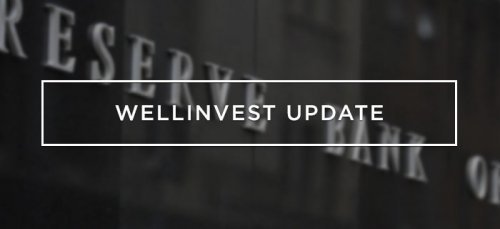
Statement by Philip Lowe, Governor: Monetary Policy Decision
At its meeting today, the Board decided to maintain the cash rate target at 10 basis points and the interest rate on Exchange Settlement balances at zero per cent.
The global economy is continuing to recover from the pandemic. However, the war in Ukraine is a major new source of uncertainty. Inflation in parts of the world has increased sharply due to large increases in energy prices and disruptions to supply chains at a time of strong demand. The prices of many commodities have increased further due to the war in Ukraine. Bond yields have risen over the past month and expectations of future policy interest rates have increased.
The Australian economy remains resilient and spending is picking up following the Omicron setback. Household and business balance sheets are in generally good shape, an upswing in business investment is underway and there is a large pipeline of construction work to be completed. Macroeconomic policy settings remain supportive of growth.
The resilience of the economy is evident in the labour market, with the unemployment rate at a 14-year low of 4.2 per cent. Underemployment is also around its lowest level since 2008. Hours worked declined significantly in January due to the Omicron outbreak, but the decline in infection rates and high numbers of job vacancies point to a strong bounce-back over the months ahead. The RBA's central forecast is for the unemployment rate to fall to below 4 per cent later in the year and to remain below 4 per cent next year.
Wages growth has picked up but, at the aggregate level, is only around the relatively low rates prevailing before the pandemic. A further pick-up in wages growth and broader measures of labour costs is expected as the labour market tightens. This pick-up is still expected to be only gradual, although there is uncertainty about the behaviour of labour costs at historically low levels of unemployment.
Inflation has picked up more quickly than the RBA had expected, but remains lower than in many other countries. The central forecast is for underlying inflation to increase further in coming quarters to around 3¼ per cent, before declining to around 2¾ per cent over 2023 as the supply-side problems are resolved and consumption patterns normalise. The CPI inflation rate will spike higher than this due to the higher petrol prices resulting from global developments. How long it takes to resolve the disruptions to supply chains is an important source of uncertainty regarding the inflation outlook, as are developments in global energy markets.
Financial conditions in Australia continue to be highly accommodative. Interest rates remain at a very low level, although some fixed rates have risen recently. The Australian dollar exchange rate is around its lows of the past year or so. Housing prices have risen strongly, although the rate of increase has eased in some cities. With interest rates at historically low levels, it is important that lending standards are maintained and that borrowers have adequate buffers.
The Board is committed to maintaining highly supportive monetary conditions to achieve its objectives of a return to full employment in Australia and inflation consistent with the target. The Board will not increase the cash rate until actual inflation is sustainably within the 2 to 3 per cent target range. While inflation has picked up, it is too early to conclude that it is sustainably within the target range. There are uncertainties about how persistent the pick-up in inflation will be given recent developments in global energy markets and ongoing supply-side problems. At the same time, wages growth remains modest and it is likely to be some time yet before growth in labour costs is at a rate consistent with inflation being sustainably at target. The Board is prepared to be patient as it monitors how the various factors affecting inflation in Australia evolve.
2022
RBA Media Release, February 2022
Statement by Philip Lowe, Governor: Monetary Policy Decision
At its meeting today, the Board decided to maintain the cash rate target at 10 basis points and the interest rate on Exchange Settlement balances at zero per cent. It also decided to cease further purchases under the bond purchase program, with the final purchases to take place on 10 February.
The Omicron outbreak has affected the economy, but it has not derailed the economic recovery. The Australian economy remains resilient and spending is expected to pick up as case numbers trend lower. The RBA's central forecast is for GDP growth of around 4¼ per cent over 2022 and 2 per cent over 2023. This outlook is supported by household and business balance sheets that are in generally good shape, an upswing in business investment, a large pipeline of construction work and supportive macroeconomic policy settings. The main source of uncertainty continues to be the pandemic.
The labour market has recovered strongly, with the unemployment rate declining to 4.2 per cent in December. Hours worked are estimated to have declined significantly in January due to the Omicron outbreak, but high numbers of job vacancies suggest further gains in employment over the months ahead. The RBA's central forecast is for the unemployment rate to fall to below 4 per cent later in the year and to be around 3¾ per cent at the end of 2023.
Wages growth has picked up but, at the aggregate level, has only returned to the relatively low rates prevailing before the pandemic. A further pick-up in wages growth is expected as the labour market tightens. This pick-up is still expected to be only gradual, although there is uncertainty about the behaviour of wages at historically low levels of unemployment.
Inflation has picked up more quickly than the RBA had expected, but remains lower than in many other countries. The headline CPI inflation rate is 3.5 per cent and is being affected by higher petrol prices, higher prices for newly constructed homes and the disruptions to global supply chains. In underlying terms, inflation is 2.6 per cent. The central forecast is for underlying inflation to increase further in coming quarters to around 3¼ per cent, before declining to around 2¾ per cent over 2023 as the supply-side problems are resolved and consumption patterns normalise. One source of uncertainty is the persistence of the disruptions to supply chains and distribution networks and their ongoing effects on prices. It is also uncertain how consumption patterns will evolve and how this will affect the balance of supply and demand, and hence prices.
Financial conditions in Australia remain highly accommodative. Together, the RBA's bond purchase program, the funding provided under the Term Funding Facility and the low level of interest rates are providing important support to the Australian economy as it recovers from the effects of the pandemic. The Australian dollar exchange rate is around its lows of the past year or so. Housing prices have risen strongly, although the rate of increase has eased in some cities. With interest rates at historically low levels, it is important that lending standards are maintained and that borrowers have adequate buffers.
The decision to end purchases under the bond purchase program follows a review of the actions of other central banks, the functioning of Australia's bond market and the progress towards the goals of full employment and inflation consistent with target. Many other central banks have ended, or will soon end, their bond purchase programs. More importantly, faster-than-expected progress has been made towards the RBA's goals and further progress is likely. In these circumstances, the Board judged that now was the right time to end the bond purchase program. Since the start of the pandemic, the RBA's balance sheet has more than tripled to around $640 billion, with this expansion providing continuing support to the economy. The Board will consider the issue of the reinvestment of the proceeds of future bond maturities at its meeting in May.
The Board is committed to maintaining highly supportive monetary conditions to achieve its objectives of a return to full employment in Australia and inflation consistent with the target. Ceasing purchases under the bond purchase program does not imply a near-term increase in interest rates. As the Board has stated previously, it will not increase the cash rate until actual inflation is sustainably within the 2 to 3 per cent target range. While inflation has picked up, it is too early to conclude that it is sustainably within the target band. There are uncertainties about how persistent the pick-up in inflation will be as supply-side problems are resolved. Wages growth also remains modest and it is likely to be some time yet before aggregate wages growth is at a rate consistent with inflation being sustainably at target. The Board is prepared to be patient as it monitors how the various factors affecting inflation in Australia evolve.
2021
RBA Media Release, December 2021
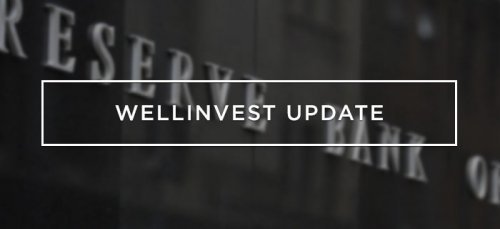
Statement by Philip Lowe, Governor: Monetary Policy Decision
At its meeting today, the Board decided to:
- Maintain the cash rate target at 10 basis points and the interest rate on Exchange Settlement balances at zero per cent
- Continue to purchase government securities at the rate of $4 billion a week until at least mid February 2022.
The Australian economy is recovering from the setback caused by the Delta outbreak. High rates of vaccination and substantial policy support are underpinning this recovery. Household consumption is rebounding strongly and the outlook for business investment has improved. The emergence of the Omicron strain is a new source of uncertainty, but it is not expected to derail the recovery. The economy is expected to return to its pre-Delta path in the first half of 2022.
Leading indicators point to a strong recovery in the labour market. Job advertisements are at an historically high level and there are reports of firms finding it difficult to hire workers. Wages growth has picked up but, at the aggregate level, has only returned to the relatively low rates prevailing before the pandemic. A further pick-up in wages growth is expected as the labour market tightens. This pick-up is expected to be only gradual, although there is uncertainty about the behaviour of wages as the unemployment rate declines to historically low levels.
Inflation has increased, but, in underlying terms, is still low, at 2.1 per cent. The headline CPI inflation rate is 3 per cent and is being affected by higher petrol prices, higher prices for newly constructed homes and the disruptions in global supply chains. A further, but only gradual, pick-up in underlying inflation is expected. The central forecast is for underlying inflation to reach 2½ per cent over 2023.
Housing prices have risen strongly over the past year, although the rate of increase has eased over recent months. Housing credit increased by 6.7 per cent over the past year, but, more recently, the value of housing loan commitments has declined from high levels. With interest rates at historically low levels, it is important that lending standards are maintained and that borrowers have adequate buffers.
Globally, bond yields have declined over the past month due to concerns about the Omicron variant. The Australian dollar exchange rate has depreciated and is around its lows of the past year. Financial conditions in Australia remain highly accommodative, with most lending rates around record lows.
At its February meeting, the Board will consider the bond purchase program. By mid February, the RBA will hold a total of $350 billion of bonds issued by the Australian Government and the states and territories, with these holdings providing significant support to the economy. In reaching its decision in February, the Board will be guided by the same three considerations that it has used from the outset of the program: the actions of other central banks; how the Australian bond market is functioning; and, most importantly, the actual and expected progress towards the goals of full employment and inflation consistent with the target.
The Board is committed to maintaining highly supportive monetary conditions to achieve its objectives of a return to full employment in Australia and inflation consistent with the target. While inflation has picked up, it remains low in underlying terms. Inflation pressures are also less than they are in many other countries, not least because of the only modest wages growth in Australia. The Board will not increase the cash rate until actual inflation is sustainably within the 2 to 3 per cent target range. This will require the labour market to be tight enough to generate wages growth that is materially higher than it is currently. This is likely to take some time and the Board is prepared to be patient.
2021
RBA Media Release, November 2021
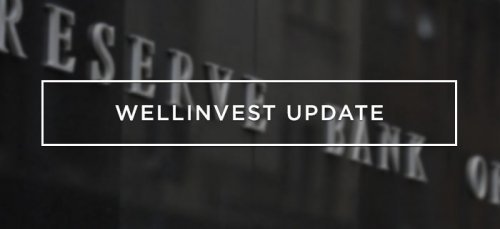
Statement by Philip Lowe, Governor: Monetary Policy Decision
At its meeting today, the Board decided to:
- Maintain the cash rate target at 10 basis points and the interest rate on Exchange Settlement balances at zero per cent
- Continue to purchase government securities at the rate of $4 billion a week until at least mid February 2022
- Discontinue the target of 10 basis points for the April 2024 Australian Government bond.
The Australian economy is recovering after the interruption caused by the Delta outbreak. As vaccination rates increase even further and restrictions are eased, the economy is expected to bounce back relatively quickly. The central forecast is for GDP growth of 3 per cent over 2021 and 5½ per cent and 2½ per cent over the following two years. One important source of uncertainty continues to be the possibility of a further setback on the health front.
The Delta outbreak caused hours worked in Australia to fall sharply, but a bounce-back is now underway. The Bank's business liaison and the data on job ads suggest that many firms are now hiring, which will boost employment over coming months. The central forecast is for the unemployment rate to trend lower over the next couple of years, reaching 4¼ per cent at the end of 2022 and 4 per cent at the end of 2023.
Inflation has picked up, but in underlying terms is still low, at 2.1 per cent. The headline CPI inflation rate is 3 per cent and is being affected by higher petrol prices, higher prices for newly constructed homes and the disruptions in global supply chains. A further, but only gradual, pick-up in underlying inflation is expected. The central forecast is for underlying inflation of around 2¼ per cent over 2021 and 2022 and 2½ per cent over 2023. Wages growth is expected to pick up gradually as the labour market tightens, with the Wage Price Index forecast to increase by 2½ per cent over 2022 and 3 per cent over 2023. The main uncertainties relate to the persistence of the current disruptions to global supply chains and the behaviour of wages at the lowest unemployment rate in decades.
Housing prices are continuing to rise in most markets and housing credit growth has picked up due to stronger demand for credit by both owner-occupiers and investors. The Bank welcomes APRA's recent decision to increase the interest rate serviceability buffer on home loans. It is important that lending standards are maintained at a time of historically low interest rates.
Financial conditions in Australia remain highly accommodative, with most lending rates at record lows. Bond yields have increased recently and bond market volatility has also risen significantly. The exchange rate has appreciated a little, but remains within the range of the past year.
The decision to discontinue the yield target reflects the improvement in the economy and the earlier-than-expected progress towards the inflation target. Given that other market interest rates have moved in response to the increased likelihood of higher inflation and lower unemployment, the effectiveness of the yield target in holding down the general structure of interest rates in Australia has diminished.
The Board is committed to maintaining highly supportive monetary conditions to achieve a return to full employment in Australia and inflation consistent with the target. While inflation has picked up, it remains low in underlying terms. Inflation pressures are also less than they are in many other countries, not least because of the only modest wages growth in Australia.
The Board will not increase the cash rate until actual inflation is sustainably within the 2 to 3 per cent target range. This will require the labour market to be tight enough to generate wages growth that is materially higher than it is currently. This is likely to take some time. The Board is prepared to be patient, with the central forecast being for underlying inflation to be no higher than 2½ per cent at the end of 2023 and for only a gradual increase in wages growth.
2021
RBA Media Release, October 2021
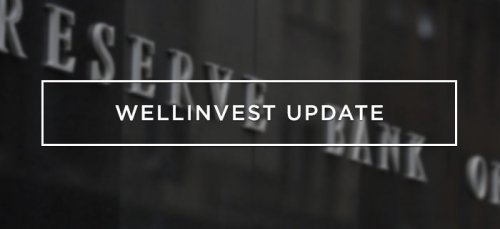
Statement by Philip Lowe, Governor: Monetary Policy Decision
At its meeting today, the Board decided to:
- Maintain the cash rate target at 10 basis points and the interest rate on Exchange Settlement balances of zero per cent
- Maintain the target of 10 basis points for the April 2024 Australian Government bond
- Continue to purchase government securities at the rate of $4 billion a week until at least mid February 2022.
The Delta outbreak has interrupted the recovery of the Australian economy and GDP is expected to have declined materially in the September quarter. The outbreak is affecting many parts of the economy, but the impact is uneven, with some areas facing very difficult conditions while others are continuing to grow strongly.
This setback to the economic expansion in Australia is expected to be only temporary. As vaccination rates increase further and restrictions are eased, the economy is expected to bounce back. Many businesses are now planning for the easing of restrictions and confidence has held up reasonably well. There is, however, uncertainty about the timing and pace of the bounce-back and it is likely to be slower than that earlier in the year. Much will depend on the nature and timing of the easing of restrictions on activity. In our central scenario, the economy will be growing again in the December quarter and is expected to be back around its pre-Delta path in the second half of next year.
The restrictions on activity have had a significant effect on the labour market. Hours worked – the best indicator of labour market conditions at the moment – declined by nearly 4 per cent in August. Looking forward, the Bank's business liaison and data on job vacancies suggest that many firms are seeking to hire workers ahead of the expected reopening in October and November.
Wage and price pressures remain subdued in Australia. In underlying terms, inflation is running at around 1¾ per cent and wages, as measured by the Wage Price Index, are increasing at just 1.7 per cent. While disruptions to global supply chains are affecting the prices of some goods, the impact of this on the overall rate of inflation remains limited.
Housing prices are continuing to rise, although turnover in some markets has declined following the virus outbreak. Housing credit growth has picked up due to stronger demand for credit by both owner-occupiers and investors. The Council of Financial Regulators has been discussing the medium-term risks to macroeconomic stability of rapid credit growth at a time of historically low interest rates. In this environment, it is important that lending standards are maintained and that loan serviceability buffers are appropriate.
The Bank's package of policies – including record low interest rates, the bond purchase program, the yield target and the funding provided under the Term Funding Facility – is providing substantial and ongoing support to the Australian economy. Borrowing rates are at record lows, sovereign bond yields are at very low levels and the exchange rate has depreciated over recent months. The fiscal responses by the Australian Government and the state and territory governments have also been providing welcome assistance in supporting household and business balance sheets.
The Board is committed to maintaining highly supportive monetary conditions to achieve a return to full employment in Australia and inflation consistent with the target. It will not increase the cash rate until actual inflation is sustainably within the 2 to 3 per cent target range. The central scenario for the economy is that this condition will not be met before 2024. Meeting this condition will require the labour market to be tight enough to generate wages growth that is materially higher than it is currently.
2021
Franking Credits
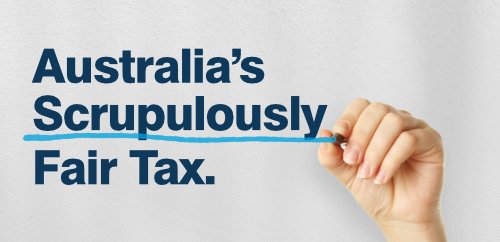
There can be no better example of a fair and just tax than Australia’s system of Franking Credits.
Firstly, what are Franking Credits?
Also known as ‘Imputation Credits’, Franking Credits are the allowance made for Company Tax deducted before you receive your dividends on your company shares.
A little like Pay As You Go (PAYG) tax on wages.
Bear in mind that virtually every adult in Australia is a shareholder, via their Super or Pension Fund, in most of Australia’s major companies.
As we know, personal Income Tax is paid at varying levels according to total taxable income, rising from Zero, to 45% at the top ‘marginal’ rate.
Other entities, such as Companies, SuperFunds and PensionFunds pay tax too, and at different levels.
The Company Tax deducted from your dividends is at the rate of 30%. This means that when you receive your ‘nett’ dividend, it is ‘after tax’. So, for example, if today you received your after tax dividend cheque for $700, then $300 tax would already have been paid on your behalf. Thus, your ‘gross’ (before tax) dividend would have been $1,000.
When it comes time to do your tax return, you show the nett $700 you received, plus the franking Credit of $300, together totalling $1,000.
Your personal tax liability on your total income (including your dividend and franking credit) is then calculated.
Then, depending on the top ‘marginal’ rate of tax (0-45%) applicable to your income, this rate is applied to your dividend and to your franking credit.
For example, total taxable income (including dividend and franking credit) $95,000 (marginal tax rate 32.5%). Then your tax would be (32.5% x $1,000), that is $325.
However, because tax of $300 has already been paid, your liability is only $25. ($325 - $300)
But say your total income came to $18,000 (Zero marginal tax rate), then your liability would be Zero. Therefore the $300 tax ‘pre-paid’ would be fully refundable to you.
One of the major tax advantages of SuperFunds is that Income Tax of only 15% is payable on investment income.
This means that your fund receives, on your behalf, a tax credit/refund of half the Franking Credit. Effectively a 21% increase to the rate of Income Return!
And - when you reach retirement and convert your Super to a PensionFund, your Pension enjoys a Zero tax liability, and will receive a full refund of the pre-paid tax (this makes a Pension Fund an unbeatable tax shelter). A 42% increase to the Income Return!
A current example of the value of franking credits is Commonwealth Bank (CBA), having recently declared
its fully-franked dividend for the year of $3.50 per share. With its franking credit of $1.50 per share, this takes the total dividend to $5.00.
This would be a 5.8% return if you’d bought your shares six months’ ago. Or a 10.6% return if you’d bought 10 years’ ago.
But that’s another story.
Figures current at 23/8/21
2021
RBA Media Release, September 2021
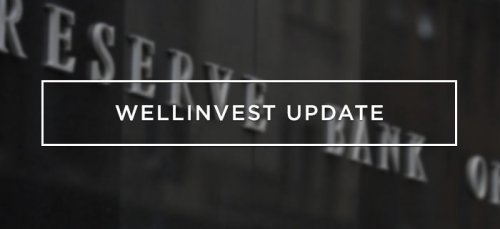
Statement by Philip Lowe, Governor: Monetary Policy Decision
At its meeting today, the Board decided to:
- Maintain the cash rate target at 10 basis points and the interest rate on Exchange Settlement balances of zero per cent
- Maintain the target of 10 basis points for the April 2024 Australian Government bond
- Purchase government securities at the rate of $4 billion a week and to continue the purchases at this rate until at least mid February 2022.
Prior to the Delta outbreak the Australian economy had considerable momentum. GDP increased by 0.7 per cent in the June quarter and by nearly 10 per cent over the year. Business investment was picking up and the labour market had strengthened. The unemployment rate had fallen below 5 per cent and job vacancies were at a high level.
The recovery in the Australian economy has, however, been interrupted by the Delta outbreak and the associated restrictions on activity. GDP is expected to decline materially in the September quarter and the unemployment rate will move higher over coming months. While the outbreak is affecting most parts of the economy, the impact is uneven, with some areas facing very difficult conditions while others are continuing to grow strongly.
This setback to the economic expansion is expected to be only temporary. The Delta outbreak is expected to delay, but not derail, the recovery. As vaccination rates increase further and restrictions are eased, the economy should bounce back. There is, however, uncertainty about the timing and pace of this bounce-back and it is likely to be slower than that earlier in the year. Much will depend on the health situation and the easing of restrictions on activity. In our central scenario, the economy will be growing again in the December quarter and is expected to be back around its pre-Delta path in the second half of next year.
Notwithstanding the strong economic and labour market outcomes pre-Delta, wage and price pressures remain subdued. Over the year to the June quarter, the Wage Price Index increased by just 1.7 per cent.
Housing prices are continuing to rise, although turnover in some markets has declined following the virus outbreak. Housing credit growth has picked up due to stronger demand for credit by both owner-occupiers and investors. Given the environment of rising housing prices and low interest rates, the Bank is monitoring trends in housing borrowing carefully and it is important that lending standards are maintained.
Very accommodative financial conditions will continue to support the recovery of the Australian economy. Borrowing rates are at record lows, sovereign bond yields are at very low levels and the exchange rate has depreciated over recent months. The fiscal responses by the Australian Government and the state and territory governments are also providing welcome assistance in supporting household and business balance sheets.
The Board's decision to extend the bond purchases at $4 billion a week until at least February 2022 reflects the delay in the economic recovery and the increased uncertainty associated with the Delta outbreak. The Board will continue to review the bond purchase program in light of economic conditions and the health situation, and their implications for the expected progress towards full employment and the inflation target. These bond purchases, together with the low level of the cash rate, the yield target and the funding that has been provided under the Term Funding Facility, are providing substantial and ongoing support to the Australian economy.
The Board is committed to maintaining highly supportive monetary conditions to achieve a return to full employment in Australia and inflation consistent with the target. It will not increase the cash rate until actual inflation is sustainably within the 2 to 3 per cent target range. The central scenario for the economy is that this condition will not be met before 2024. Meeting this condition will require the labour market to be tight enough to generate wages growth that is materially higher than it is currently.
2021
RBA Media Release, August 2021
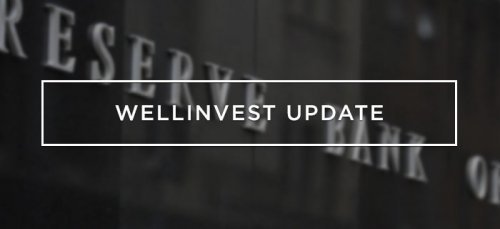
Statement by Philip Lowe, Governor: Monetary Policy Decision
At its meeting today, the Board decided to:
- Maintain the cash rate target at 10 basis points and the interest rate on Exchange Settlement balances of zero per cent
- Maintain the target of 10 basis points for the April 2024 Australian Government bond
- Continue to purchase government securities at the rate of $5 billion a week until early September and then $4 billion a week until at least mid November.
The economic recovery in Australia has been stronger than was earlier expected. The recent outbreaks of the virus are, however, interrupting the recovery and GDP is expected to decline in the September quarter. The experience to date has been that once virus outbreaks are contained, the economy bounces back quickly. Prior to the current virus outbreaks, the Australian economy had considerable momentum and it is still expected to grow strongly again next year. The economy is benefiting from significant additional policy support and the vaccination program will also assist with the recovery.
The economic outlook for the coming months is uncertain and depends upon the evolution of the health situation and the containment measures. Beyond that, the Bank's central scenario is for the economy to grow by a little over 4 per cent over 2022 and by around 2½ per cent over 2023. This scenario is based on a significant share of the population being vaccinated by the end of this year and a gradual opening up of the international border from the middle of 2022. The Board also considered a range of other scenarios, with the main source of uncertainty being the health situation.
The labour market has recovered faster than expected, with the unemployment rate declining further to 4.9 per cent in June. Job vacancies have remained at a high level and there are reports of labour shortages in parts of the economy. Some increase in the unemployment rate is expected in the near term due to the current lockdowns, but most of the adjustment in the labour market is likely to take place through a reduction in hours worked and in participation. In the central scenario, the unemployment rate continues to trend lower next year, to be around 4¼ per cent at the end of 2022 and 4 per cent at the end of 2023.
The CPI inflation rate spiked to 3.8 per cent for the year to the June quarter, largely reflecting the unwinding of some earlier COVID-19-related price declines. In underlying terms, inflation remains low, at around 1¾ per cent.
Looking forward, a pick-up in both wages growth and underlying inflation is expected, but this pick-up is likely to be only gradual. In the Bank's central scenario, it takes some years for the stronger economy to feed through into wage and price increases that are consistent with the inflation target. In underlying terms, inflation is expected to be 1¾ per cent over 2022 and 2¼ per cent over 2023. One source of uncertainty is the behaviour of wages and prices at the low levels of forecast unemployment, including because it is some decades since Australia has sustained an unemployment rate around 4 per cent.
Housing markets have continued to strengthen, with prices rising in all major markets. Housing credit growth has picked up, with strong demand from owner-occupiers, including first-home buyers. There has also been increased borrowing by investors. Given the environment of rising housing prices and low interest rates, the Bank is monitoring trends in housing borrowing carefully and it is important that lending standards are maintained.
Domestic financial conditions remain very accommodative, sovereign bond yields have declined and the exchange rate has depreciated to around its lowest level this year, despite elevated levels of commodity prices. The recent fiscal responses by the Australian Government and the state and territory governments are also providing welcome support to the economy at a time of significant short-term disruption.
The Board remains committed to maintaining highly accommodative monetary conditions to support a return to full employment in Australia and inflation consistent with the target. Together, the low level of the cash rate, the bond purchase program, the yield target and the ongoing funding that has been provided under the Term Funding Facility are providing substantial support to the Australian economy in the face of lockdowns in parts of the country and the expected resumption of the economic expansion.
The Board will maintain its flexible approach to the rate of bond purchases. The program will continue to be reviewed in light of economic conditions and the health situation, and their implications for the expected progress towards full employment and the inflation target. The Board will not increase the cash rate until actual inflation is sustainably within the 2 to 3 per cent target range. The central scenario for the economy is that this condition will not be met before 2024. Meeting this condition will require the labour market to be tight enough to generate wages growth that is materially higher than it is currently.
2021
RBA Media Release, July 2021
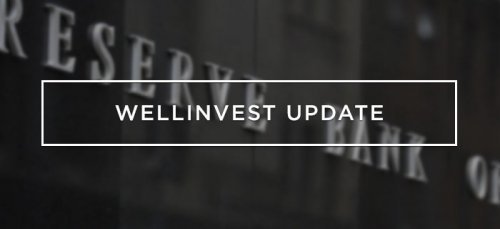
Statement by Philip Lowe, Governor: Monetary Policy Decision
At its meeting today, the Board decided to:
- Retain the April 2024 bond as the bond for the yield target and retain the target of 10 basis points
- Continue purchasing government bonds after the completion of the current bond purchase program in early September. These purchases will be at the rate of $4 billion a week until at least mid November
- Maintain the cash rate target at 10 basis points and the interest rate on Exchange Settlement balances of zero per cent.
These measures will provide the continuing monetary support that the economy needs as it transitions from the recovery phase to the expansion phase. The Board is committed to achieving the goals of full employment and inflation consistent with the target. Today's decisions, together with those taken previously, have the economy on a path to achieve those objectives.
The economic recovery in Australia is stronger than earlier expected and is forecast to continue. The outlook for investment has improved and household and business balance sheets are generally in good shape. National income is also being supported by the high prices for commodity exports. Domestic financial conditions are very supportive and the exchange rate has depreciated a little recently. One near-term uncertainty is the effect of the recent virus outbreaks and the lockdowns. But the experience to date has been that once outbreaks are contained and restrictions are eased, the economy bounces back quickly.
The labour market has continued to recover faster than expected. The unemployment rate declined further to 5.1 per cent in May and more Australians have jobs than before the pandemic. There has also been a welcome decline in underemployment and labour force participation is around record highs. Job vacancies are high and more firms are reporting shortages of labour, particularly in areas affected by the closure of Australia's international borders.
Despite the strong recovery in jobs and reports of labour shortages, inflation and wage outcomes remain subdued. While a pick-up in inflation and wages growth is expected, it is likely to be only gradual and modest. In the central scenario, inflation in underlying terms is expected to be 1½ per cent over 2021 and 2 per cent by mid 2023. In the short term, CPI inflation is expected to rise temporarily to about 3½ per cent over the year to the June quarter because of the reversal of some COVID-19-related price reductions a year ago.
Maintaining the target of 10 basis points for the April 2024 bond will continue to keep interest rates low at the short end of the yield curve and support low funding costs in Australia. The yield on this bond is consistent with the target and the RBA remains prepared to operate in the market to achieve the target.
The bond purchase program is playing an important role in supporting the Australian economy. The Bank will continue to purchase bonds given that we remain some distance from the inflation and employment objectives. However, the Board is responding to the stronger-than-expected economic recovery and the improved outlook by adjusting the weekly amount purchased. It will conduct a further review in November, allowing the Board to respond to the state of the economy at that time.
The final draw-downs under the Term Funding Facility were made in late June. In total, $188 billion has been drawn down under this facility, which has contributed to the Australian banking system being highly liquid. Given that the facility is providing low-cost fixed-rate funding for 3 years, it will continue to support low borrowing costs until mid 2024.
Housing markets have continued to strengthen, with prices rising in all major markets. Housing credit growth has picked up, with strong demand from owner-occupiers, including first-home buyers. There has also been increased borrowing by investors. Given the environment of rising housing prices and low interest rates, the Bank will be monitoring trends in housing borrowing carefully and it is important that lending standards are maintained.
The Board remains committed to maintaining highly supportive monetary conditions to support a return to full employment in Australia and inflation consistent with the target. It will not increase the cash rate until actual inflation is sustainably within the 2 to 3 per cent target range. The Bank's central scenario for the economy is that this condition will not be met before 2024. Meeting it will require the labour market to be tight enough to generate wages growth that is materially higher than it is currently.
